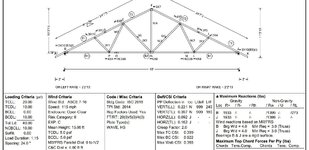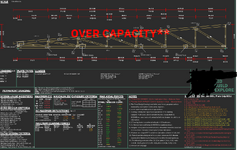JStructsteel
Structural
- Aug 22, 2002
- 1,448
So got truss reactions as a lump sum, i.e. not broken into DL, LL, WL, etc.
Is it worth figuring out the components, or just design for the total reaction using ASD?
I asked for the component reactions, but got no reply.
Thanks
Is it worth figuring out the components, or just design for the total reaction using ASD?
I asked for the component reactions, but got no reply.
Thanks


![[upsidedown] [upsidedown] [upsidedown]](/data/assets/smilies/upsidedown.gif)
